Sustainability is here to stay and is a key driver of growth and innovation for consumer products firms. Consumers are letting their wallets speak loudly enough that CPG firms must prioritize the innovations that consumers are demanding. The impact is greatest in traditional CPG categories, such as food, beverage, and household products, but recently pet owners have become a purchasing powerhouse that have also embraced eco-friendly foods, snacks, and toys. Environmentally friendly products are in greater demand this past year, as consumers struggle with the ongoing pandemic and shift more of their purchasing online. Companies have obviously felt this shift and are responding in-kind. Thus, sustainability is now integrally linked to product innovation, whether it be food, beverage, vitamins or pet foods, and CPG manufacturers must continue to respond and adapt to the eco-conscious consumer’s needs.
Sustainability is Driving Sales
Consumer desire for sustainable products has evolved from an emerging trend into an ongoing movement. Research from a NYU Stern Center for Sustainable Business/IRI that analyzed data 2015 to 2019, reported that consumer product goods (CPG) marketed with sustainability claims drove 54.7% sales growth. This increase was more than seven times higher than that for non-sustainable products. The NYU/IRI analysis investigated 36 CPG categories, including pet food and treats. For pet treats, those marketed with sustainable claims saw about 70% sales growth from 2015-2019, compared to a growth rate of about 30% for treats without sustainable claims.[1]
The Pandemic Experience is Changing Consumer Sentiment About Sustainability
As consumers increased their online purchasing during the pandemic, packaging waste became more apparent to them. This creates an opportunity for brands and packagers to develop further sustainable packaging that works specifically for online sales. Manufacturers are rethinking packaging design, balancing protection needs with convenience and sustainability.
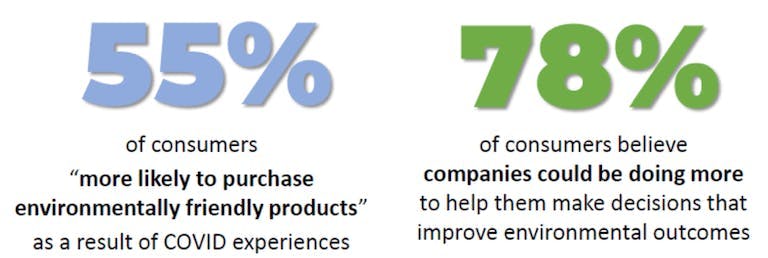
Source: Natural Marketing Institute May 2020 report
Products carrying a sustainability claim have continued growing during the COVID-19 pandemic, capturing a 17% market share during the first half of 2020, according to updated research from NYU Stern Center for Sustainable Business/IRI. Sustainability-marketed products saw a 56% increase in dollar sales during the week ended March 15, when CPG sales peaked due to pantry stocking.[2]
IRI identified sustainable products as a key opportunity for brands. One major category driving interest is plant-based protein alternatives. Dollar sales rose 26% for products with claims such as “contains pea protein” or “contains seitan protein” in 2020, according to IRI. Nielsen data showed through Oct. 3, 2020 that meat alternative sales were up 129% compared to the first nine months of 2019. This segment is likely only just now hitting its stride. As consumers continue to seek out foods that are both sustainable and better for them, this is a bright spot where manufacturers can focus their energy as they work to keep pace with evolving consumer needs. [3]
Experts are recommending that the entire food industry should reevaluate its approach to product packaging and ingredients to capitalize on these trends. “In the U.S. alone, Nielsen estimates show that consumers will spend up to $150 billion on sustainable consumer goods by 2021 and, within the next year, Nielsen projects that 25 percent of products in stores will be sustainable.”[4] McKinsey has stated that the whole packaging value chain will need to quickly adapt to consumers’ desires for more sustainable packaging and products.
Examples of innovation with plant-based ingredients and packaging design illuminates how CPG companies are responding to the demands of eco-conscious consumers looking for sustainable options.
CPG Innovation at Kellogg
Kellogg executives recently presented at the investor conference, Consumer Analyst Group of NY (CAGNY), and noted that the company was “doubling down on our purpose-led innovation with Incogmeato and with sustainable packaging. We recently launched recycle-ready packaging for Pop Tarts bites and Nutri-Grain bites in small format stores. We were first to market with recycle-ready pillow bags for cereal in the U.S., and we’re testing a 100% recyclable Pringles can in Europe.”[5]
Kellogg’s sustainable innovation strategy is tied to the belief that “people want to use their food choices to demonstrate their values, their commitment to people, community and planet.” The company’s two-pronged sustainable innovation strategy, that focuses on both the packaging and ingredients, is driving growth.
Plant-Based Ingredients: “We know that eating a plant-diverse diet is good for people and the planet because plant-based foods support physical well-being and require less land and water to produce. Across Kellogg globally, we’re proud that 86% of our recipes are plant-based today. Think of how favorably that compares with other global CPG and food companies. And we’re doubling down on plant-based to drive growth. In 2020, 100% of our breakthrough innovation launches globally were plant-based. And think what that means for the consumer.”
Example: Plant-Based Proteins from Morningstar Farms & Incogmeato: Kellogg’s meat alternatives include various plant-based protein products from Morningstar Farms and its recently launched subline of Morningstar known as Incogmeato. “In 2021, we will launch innovation across the whole of this range, from Veggie Meatballs and Bites to our new Incogmeato Chik’n Nuggets and Bites.”
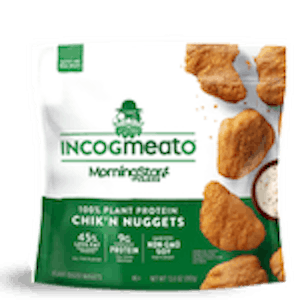
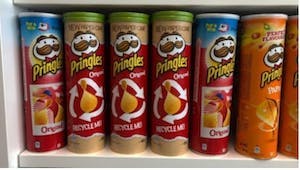
Source: MorningstarFarms.com; “KELLOGG COMPANY CAGNY 2021,” Kellogg, Feb. 2021
Innovation in Packaging: “The majority of our packaging is recyclable paper and cardboard, and 76% of our packaging volume overall is recyclable today. Many CPG companies utilize hundreds of thousands of metric tons of plastic packaging. In contrast, we have one of the smallest plastic packaging footprints among peer food companies. In fact, it takes us a full year to use as much plastic as a leading beverage company uses in just 2 weeks. We even sell over 300 million servings a year in both distribution models without consumer packaging at all.”
Example: Pringles Breakthrough in Sustainability: Pringles has test launched a new tube made of widely recyclable paper, allowing fans of the snack to dispose of the packaging with their regular household recycling.
Focus on the Eco-Conscious Pet Consumer
Pet owners have emerged as a purchasing group this is passionate about sustainability. Pet owners are taking a closer look at the environmental impact of the products they purchase. The contents of pet food and the packaging materials are now important factors that are being considered during their purchase. The ongoing pandemic has only heightened the focus on sustainability, as more pet products are being purchased online. The pet industry must quickly adapt and foster sustainable innovation that will attract and retain customers.
During the COVID-19 crisis, pet owners expressed their preference for sustainable products. A recent survey found that 22% of consumers would like to see more sustainably sourced pet foods on the market. This interest surpasses that of other trends like plant-based protein and fresh or freeze-dried foods. Sustainability has evolved beyond environmentally friendly packaging. [6]
Shift to Eco-Friendly Packaging – Reusable Dog Food Containers Example: Open Farm, an industry leader in sustainable pet food, has partnered with Loop, a global reuse platform, in Canada. Customers can purchase a variety of Open Farm’s freeze-dried raw dog food in reusable stainless-steel tins. Loop picks up the tins from customers’ homes for free, and then cleanses them according to stringent health and safety standards before reusing them as needed. According to Open Farm, 91% of plastic waste has not been recycled, with pet food being a large contributor.[7]
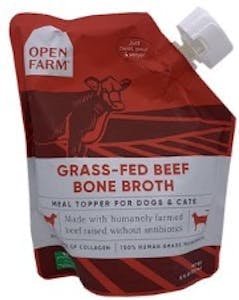
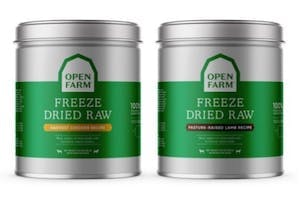
Source: OpenFarm.com
The pandemic has heightened consumer awareness of sustainability, as a greater portion of consumer purchases are being made online. While packaging innovations are essential for reducing waste, especially in an more e-commerce focused environment, CPG firms must check all the sustainable boxes that consumers are seeking. The digitally savvy consumer has become adroit at quickly comparing product claims, therefore any company that is slow to adapt, will no doubt see a negative impact in market share. Sustainable goals are not just corporate objectives, the eco-friendly purchaser is willing to pay a premium for environmentally friendly products and is seeking a partner that will continue to offer product enhancements that will help them achieve their personal sustainable goals.
If you are interested in uncovering new market opportunities and understanding how trends are shaping the future, contact us and ask how we could help you get serious about trend tracking and analysis.
Read more about trends:
- The Kitchen of the Future and the Trends Shaping It
- Four Reasons to Go Beyond Tracking Trends to Determine Their Impact
- Hey Managers! Time to Get Serious About Trend Research—Here’s Why
- 5G Will Revolutionize Market Research in Polka Dot Fashion
- Big Village Insights’ Blog and Pulse of the American Consumer
Written by Mary D’Altrui, Research Director at Big Village Insights.
[1] https://www.petfoodindustry.com/articles/9550-how-sustainable-pet-food-claims-resonate-with-consumers
[2] https://www.fooddive.com/news/sustainability-marketed-products-saw-sales-boost-amid-pandemic-report-says/582238/#:~:text=As%20CPG%20sales%20spiked%20during,only%2016.1%25%20of%20its%20products.
[3] https://www.fooddive.com/news/shoppers-shifting-toward-value-and-smaller-sizes-in-2021-iri-says/593947/
[4] https://www.petbusiness.com/archives/nielsen-highlights-sustainability-trends/article_29625f87-9790-5e3c-91a4-c7a5aaa70e4a.html#:~:text=In%20the%20U.S.%20alone%2C%20Nielsen,in%20stores%20will%20be%20sustainable.
[5] Kellogg Co at Consumer Analyst Group of New York (CAGNY) Virtual Conference, Feb. 17, 2021
[6] https://foodindustryexecutive.com/2020/09/pet-food-sustainability-beyond-the-package/
[7] “Best In Show: A Weekly Snapshot of Pet Industry News & Trends – Vol. 2,” JEFFERIES, 04 FEB 21

